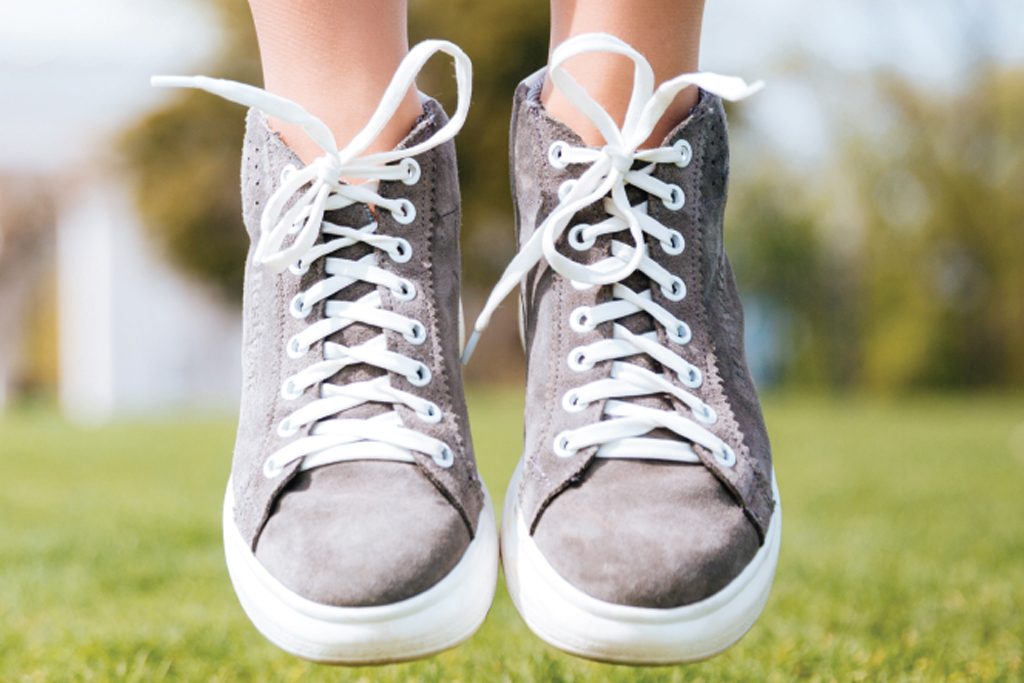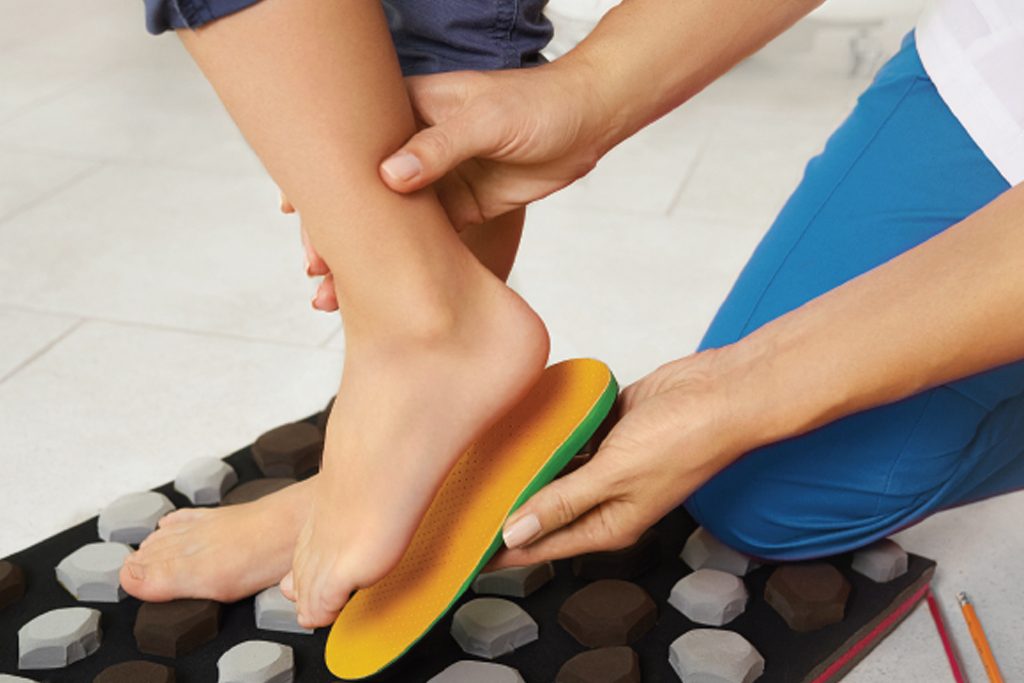MORE THAN JUST A COMFORTABLE PAIR OF SHOES OR PADDED INSOLES, ORTHOTICS CAN SOLVE AN ARRAY OF FOOT AND LOWER LIMB PROBLEMS FOR A PAIN-FREE WALK THROUGH LIFE.

You may have done this before — stubbornly sticking it out in a spanking-new pair of shoes for the entire day, even if it turns painful for our feet.
When it comes to footwear, the obvious solution that fulfils both fashion and comfort needs is orthopaedic footwear or, at the very least, orthoses. Orthoses are customised and prescribed medical devices that support your feet and general form, such as insoles and inserts.
Style is not necessarily lost on medical-grade devices, as customised insoles can be fitted into your shoes, depending on your foot condition. Specially designed for each individual, orthoses go a long way in treating a host of foot and lower limb problems and improving health conditions.
PROTECTING YOUR SOLE
One of the first groups of people to vouch for orthoses would be runners; another would be workers who have to be on their feet for hours on end and bemoan their subsequent development of plantar fasciitis.
This common affliction refers to the inflammation of a thick band of tissue, the plantar fascia, that runs across the bottom of the foot from heel to toes. Plantar fasciitis is most notably identified by the stabbing pain when walking immediately after getting out of bed. The inflammation arises from the tiny tears and overstretching of the tissue underfoot, so orthotics recommends distributing further pressure placed on your feet in order to support your weight better and mitigate pain.
But orthotics serves more than those with occupational health hazards. Flatfoot is estimated to occur in one out of five people in Asia, making it a common condition among the population. The correct insole redistributes any additional stress placed on other points of your joints. Without correction, people with flat feet may find themselves developing aches in their lower limbs, back, ankles and feet, especially after sporting activity or prolonged standing.
Customised orthotics is also important for those who are diabetic. Diabetic patients have particularly vulnerable feet and risk developing loss of sensation, nerve damage, numbness and ulcers in their feet. These can result in foot deformities, wounds and even amputations. “Almost all high-risk diabetics should use diabetic foot orthotics,” advises Ari Tria Dzulkifle, Senior Podiatrist at East Coast Podiatry Centre (ECPC). “These orthotics protect the foot structure and reduce the likelihood of developing wounds and deformities.” In fact, diabetics should already be seeing a podiatrist within three months of being diagnosed, and should continue to do so regularly.

TAKING THE FIRST STEP
Treating your foot problems with orthotics takes more than shopping around and getting them across the counter.
“Although retail insoles and medical-grade foot orthotics are both colloquially called insoles, the difference between them is like night and day,” clarifies Georgina Tay, Director of ECPC. “The foot orthotic devices we prescribe are customised for your foot shape, and designed to address underlying conditions and deformities that cause pain. Retail insoles may offer some support or cushion, but lack the customisation necessary to may even hinder healing.”
A retail insole may seem cheaper than an appointment and medical evaluation with a podiatrist but that is a common misconception. “The standard reaction when people hear about orthotics is that it’s usually quite hard, uncomfortable and expensive,” says Tiffany Tsao, Senior Principal Podiatrist at Orthotics Lab Singapore. “But there are many different categories of custom-made orthotics.” The prescriptions and price are dependent on the specific problem, Tsao clarifies.
Getting orthotics overseen only by the medically trained is even more urgent when it comes to diabetics, as diabetic foot orthotics should be specifically designed for the patient, not bought off the shelf, stresses Ari. “Shoes for diabetics are specialised with no seams on the inside to reduce friction and abrasion against the foot, which serves to reduce wounds.”
The case for customised orthotics and seeing a podiatrist is also relevant to the general population, even if they are non-diabetic and suffer no foot or lower limb problems. After all, early detection and prescription of any necessary orthotics can prevent issues from developing, especially if you are unknowingly at risk, and ensure the most comfortable road ahead.
Tsao provides an analogy that puts the idea of maintaining happy and healthy feet the right way in a crucial and everyday context: “People study cars and get information on how to maintain their cars because they use it every day. It’s the same for our feet — we need them every day.”







